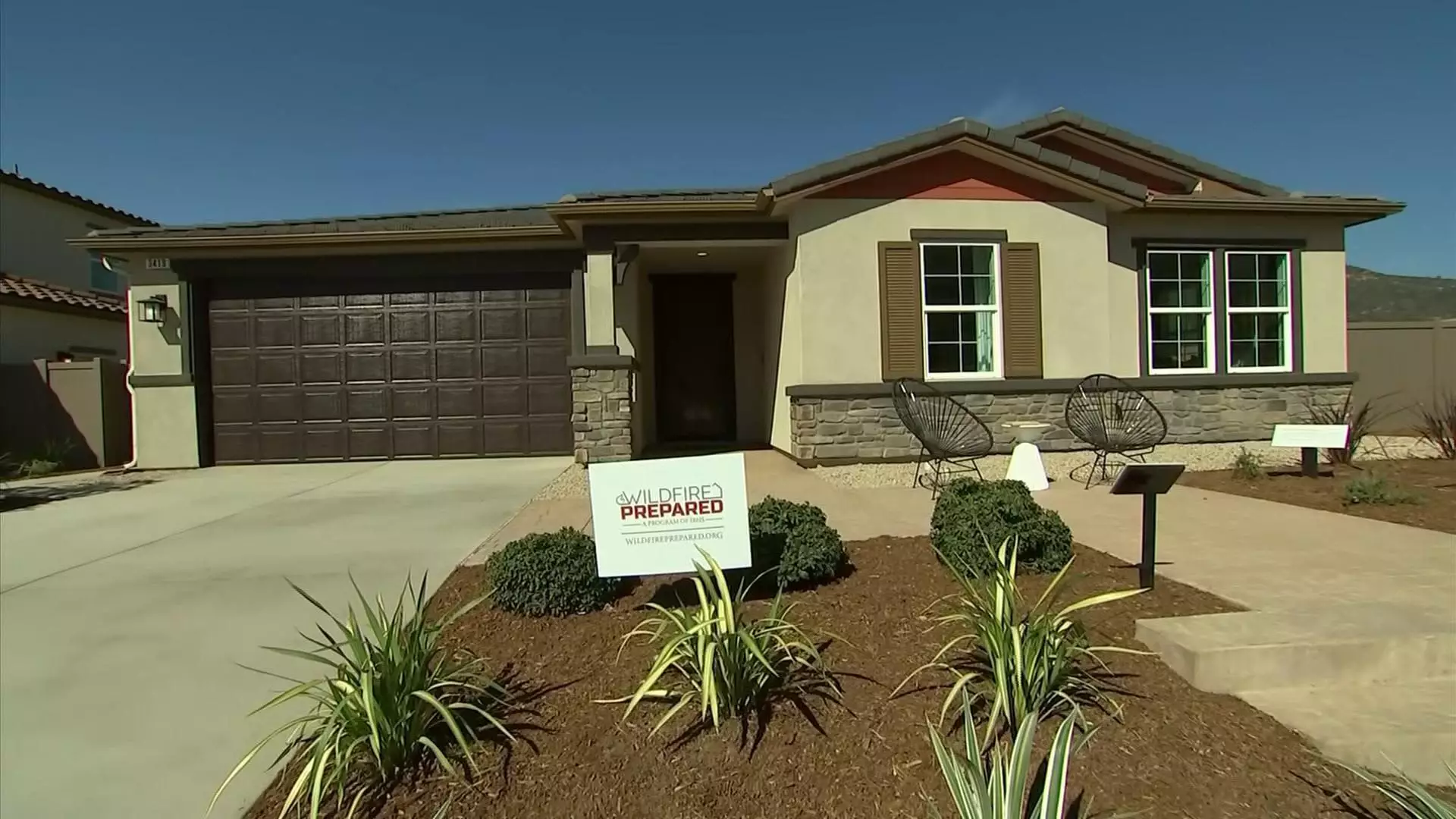It’s no secret that California has been grappling with devastating wildfires that have ravaged landscapes and homes alike. The alarming trend has left communities devastated, crops destroyed, and a scarred environment as a stark reminder of climate change’s relentless grip. In response to this escalating issue, KB Home—a prominent California builder—has initiated a radical development project aimed at fortifying homes against the growing threat of wildfires. This initiative reflects a profound shift in how we approach residential safety and community survival in an era marked by increased environmental volatility.
Breaking New Ground: Fire-Resilient Housing Designs
KB Home’s Escondido development showcases 64 single-family homes that meet rigorous wildfire resilience standards set by the Insurance Institute for Business & Home Safety (IBHS). This effort isn’t merely an architectural proposition but an essential lifeline for residents living on the interstitial edge of wildfire-prone regions. These structures incorporate fire-resistant features, including non-combustible siding, tempered-glass windows, and specifically designed defensible spaces.
What’s remarkably ambitious about this project is that it signifies more than just an isolated set of homes. It serves as a prototype for future developments across California and beyond, advocating for designs that prioritize both safety and sustainability. Yet, the question remains: can these sturdy structures genuinely withstand nature’s fury? While they boast impressive statistics and innovative designs, the ultimate test will be in the real-world scenarios they face—especially when wildfires blaze relentlessly.
Resilience Challenges Within Financial Constraints
The challenge of scaling such innovations too often lies in their cost—a reality that often undermines the intent behind their creation. While KB Home has aimed to strike a balance between affordability and safety, positioning homes in the low million dollar range may still be prohibitive for many first-time buyers or those on the verge of moving up the property ladder. Steve Ruffner, regional general manager for KB Home, recognizes this tension and insists on making these structures accessible.
However, discussions surrounding fire resilience raise a vital question: how much should safety cost? In a world that has seen insurance companies retreat from high-risk areas in California, homeowners face soaring premiums or a lack of coverage. KB Home’s proposal could serve as an example of how responsible developers might bridge innovation and financial access—yet success hinges on broader public policy initiatives to incentivize and support safer construction.
A Model for the Future: What Lies Ahead?
The construction of this wildfire-resilient community is not merely a reactionary measure; it is an acute observation of the intertwining relationship between climate change and housing development. The project’s segmentation—homes spaced 10 feet apart to inhibit fire spread—reveals strategies that other producers ought to consider. As drought conditions intensify and wildfires become more frequent, KB Home’s deliberate experimentation sets a powerful precedent—a clarion call for the building industry to reevaluate its methods.
Industry executives, like Roy Wright of the IBHS, suggest that KB Home stands at the vanguard of a transformative movement where safety isn’t just an afterthought but a paramount consideration in community planning. As the first major builder to undertake such a project, there is an expectation that competitors will soon follow suit. This ripple effect could ultimately reshape how housing communities across fire-prone regions are designed.
Changing Mindsets in Policy and Practice
Nevertheless, the success of fire-resilient homes hinges upon a broader shift in societal attitudes toward safety and preparedness in the context of climate change. Homes must not only be designed to withstand immediate threats but also encourage responsible lifestyle choices for landscaping, vegetation management, and urban planning.
Moreover, a collaborative effort among residents, local authorities, and architects will be key in establishing landscaping standards that mitigate fire risk. The reality is that these homes, despite their enhancements, won’t eliminate all risks. The proactive mindset required from homeowners—and the local governments that support them—is what distinguishes a fire-resilient community from traditional developments.
It’s a challenging road ahead, but initiatives like KB Home’s Escondido project provide a glimmer of hope that combines innovation with prudence, ultimately paving the way toward an adaptive future for homebuilding in this climate-affected era. The nexus of resilient homes and informed communities may just be the key to enduring California’s fiery trials.

